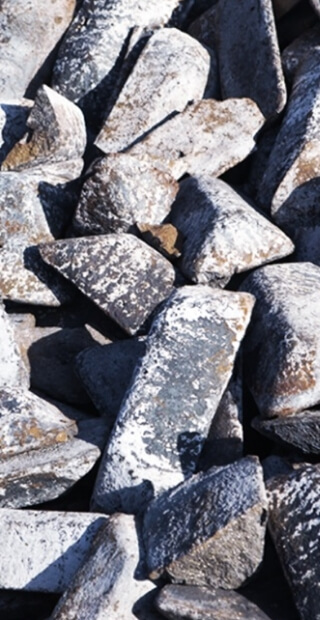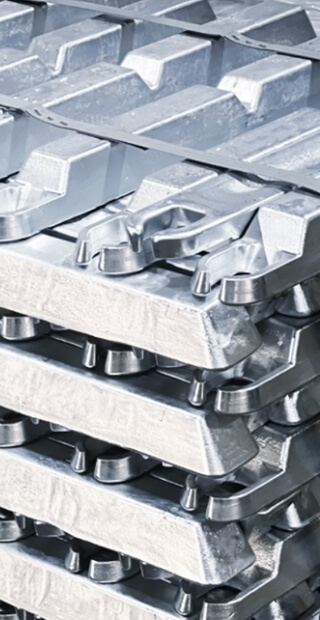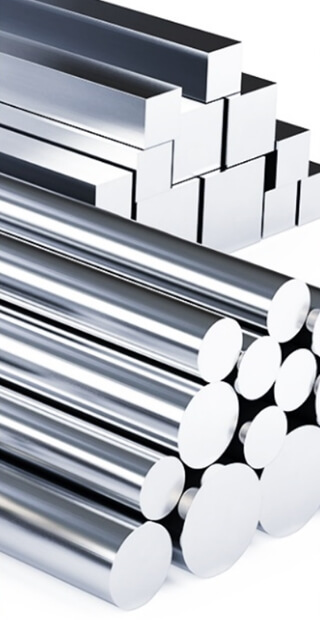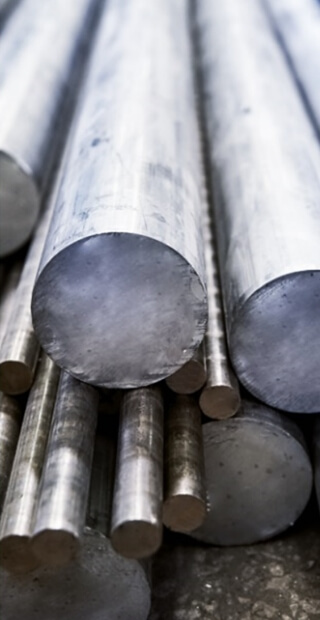Seamless Material Procurement & Integrated Supply Chain Solutions
Metal material is a general term of pure metal or alloy in industry. Common pure metal includes gold, silver, copper, iron, aluminum, tin, nickel, lead, zinc, carbon, etc. Combining two or more metal or non-metal is called alloy. Alloys can adjust the properties of pure metals to more industrially demanding characteristics. Common alloy is composed of iron and carbon as ferroalloys, including steel, stainless steel, carbon steel, tool steel and alloy steel, etc. Ferroalloy is also the most broadly used and most important material in engineering technology among metal materials.
Metal materials are vitally important to the economic development of all countries in the world. Metal is a permanent material that can be cycled repeatedly without losing its properties. Metal materials can be recycled, reused and reduced waste, which is the basis for successful circular economy. From transportation, infrastructure, real estate to manufacturing, agriculture and energy industries, high-strength steel products keep expanding and reducing the weight of metal applications, which achieves circular economy.
WKPT not only provides cast iron, stainless steel, carbon steel, but also non-ferrous metal forming technology, such as die-casting and extruding deformed aluminum alloy processing. In addition to above materials, we also accept customers designated materials for processing.
-
Cast iron materials refer to iron-carbon alloys with carbon content more than 2.11%. In addition to carbon, there are also elements such as silicon, manganese, and a small amount of sulfur and phosphorus. Cast iron is usually made of pig iron, scrap steel, ferroalloys, etc. in different proportions through smelting. It has good performance in features such as casting, shock absorbing, pressure resistance, wear resistance, cutting processing, etc. Compared with other metal materials, cast iron production equipment and technology are relatively simple and low in price, so it is widely used in machinery manufacturing, petroleum, chemical industry, metallurgy, transportation and military industries, etc. Industrial cast iron generally contains 2.5% to 3.5% carbon. Carbon mostly presents in the form of graphite in cast iron. Based on the form of graphite, it can be roughly divided into white cast iron (steel-making pig iron), gray cast iron, malleable cast iron, ductile iron, etc.
-
WKPT utilizes multi-axis milling machines, machining centers, CNC machine tools, and grinders to manufacture high-precision, lightweight aluminum alloy parts to meet the manufacturing needs of vehicles, power machinery, and other components. Aluminum alloys offer low density but high strength, approaching or exceeding that of high-quality steel. They also possess excellent plasticity, can be processed into various profiles, and possess superior electrical and thermal conductivity.
-
Stainless steel is a general term for high-alloy steels typically made from iron with 12% to 30% chromium and other alloying elements added. WKPT utilizes multi-axis milling machines, machining centers, digital machine tools, and grinders to manufacture high-precision stainless steel parts for vehicles, power machinery, and other applications.
-
WKPT uses multi-axis milling machines, machining centers, CNC machine tools and grinders to manufacture high-precision carbon steel parts to meet the needs of vehicles, power machinery and other industrial parts.
- Free-cutting steel:By adding sulfur, tellurium, or 0.15~0.35% of lead to ordinary carbon steel, to have better machinability.
- Bearing steel:It’s a high-carbon high-chromium alloy steel with good overall performance. It has evenly high hardness after quenching and tempering, high wear resistance and contact fatigue strength.
- Carbon structural steel:Carbon structural steel refers to carbon steel with carbon content less than 0.38% and sulfur and phosphorus content more than 0.035%. It is usually rolled into rebar, steel bars, steel plates, steel pipes, etc.
- Nickel-chromium-molybdenum structural steel:Add less than 1.0% molybdenum into nickel-chromium steel will get a tough steel. It is the best case hardening steel among structural steels.
| Material | Stainless Steel | Carbon Steel | Cast Iron |
|---|---|---|---|
| Main Element | Iron | ||
| Carbon Content | 0.85~1.0 % | 0.0218%~2.11% | 2.11%~6.67% |
| Types |
|
Low carbon steel Medium carbon steel High carbon steel |
Grey cast iron White cast iron Malleable cast iron Ductile iron Vermicular cast iron |
| Material Configuration | It is a material with a certain shape, size and performance made by pressure machining of steel ingots, billets or steel. | It is a material with a certain shape, size and performance made by pressure machining of steel ingots, billets or steel. | It is usually made of pig iron, scrap steel, ferroalloys, etc. in different proportions through smelting. After that, it will be directly poured into castings. |
| Machining Features | Nice mechanical property and easy to machining. Keep property in good condition even in high and low temperature environment. | The higher the carbon in carbon steel, the greater the hardness, and also the higher strength but lower plasticity. |
|
| Industries Application | Metal parts require corrosion resistance, easy cutting, weldability, abrasion resistance and fatigue resistance. | Metal parts require strength, hardness, and wear resistance. | Metal parts require low cost, good machining, shock absorbing and wear resistance. High hardness, tensile resistance, ductility and deformation resistance. |




